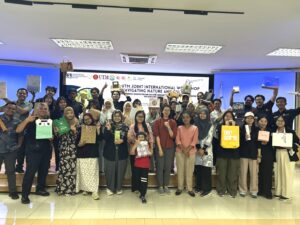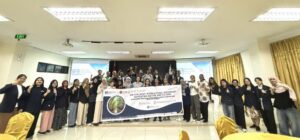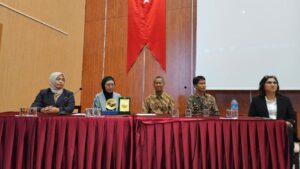Writer: Lathifa Nursyamsu, S.Ars., M.Arch. | Editor: Ambarwulan, S.T.
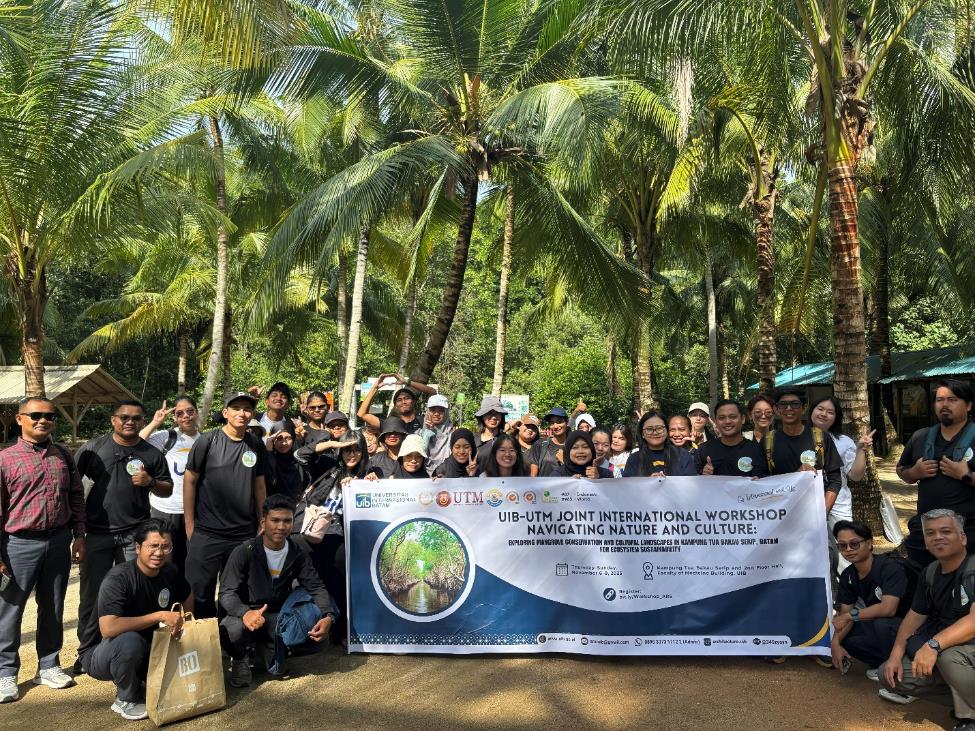
Batam, Friday, 7 November 2025 – The second day of the UIB–UTM Joint International Workshop – “Navigating Nature and Culture: Exploring Mangrove Conservation and Cultural Landscapes in Kampung Tua Bakau Serip, Batam for Ecosystem Sustainability” marked the core field activity where students from Universitas Internasional Batam (UIB) and Universiti Teknologi Malaysia (UTM) immersed themselves in direct learning through ecosystem observation and mangrove planting. The activity took place at the Ekowisata Mangrove Pandang Tak Jemu, Kampung Tua Bakau Serip from 9 am to 4 pm.
The day began at 08.00 WIB as the UIB team departed from the UIB campus and the UTM team left their hotel in Harbour Bay. Both teams arrived at Ekowisata Mangrove Pandang Tak Jemu at around 09.00 WIB, where they were warmly welcomed by Mr. Gari, an environmental activist and founder of the ecotourism site. In his welcome remarks, Mr. Gari expressed his joy in receiving guests from Malaysia and shared the inspiring story behind the establishment of the area, which was once a landfill (TPA) transformed into a thriving mangrove forest that now benefits both the environment and the surrounding community.
After the welcoming session, participants were guided into the mangrove forest area to begin the educational session. The explanation was delivered in English by Ms. Intan to ensure understanding by Malaysian students. She elaborated on the history and development of Ekowisata Mangrove Pandang Tak Jemu, the various mangrove species found within the area, accompanying flora and fauna, and the many uses of mangrove plants—including tea, coffee, and traditional medicines. She also explained how mangrove trees grow, either naturally through propagules or manually through nursery planting. Ms. Intan further highlighted the ecological importance of mangroves, including their capability to produce more oxygen than rainforests and their role in preventing coastal abrasion. Ms. Intan also stated “Therefore, we must protect mangrove forests because they provide great benefits to the earth; including the air we currently breathe.” She also shared interesting facts, such as the edible nature of mangrove fruits, which are difficult to find because most are consumed by animals—especially monkeys—before ripening.
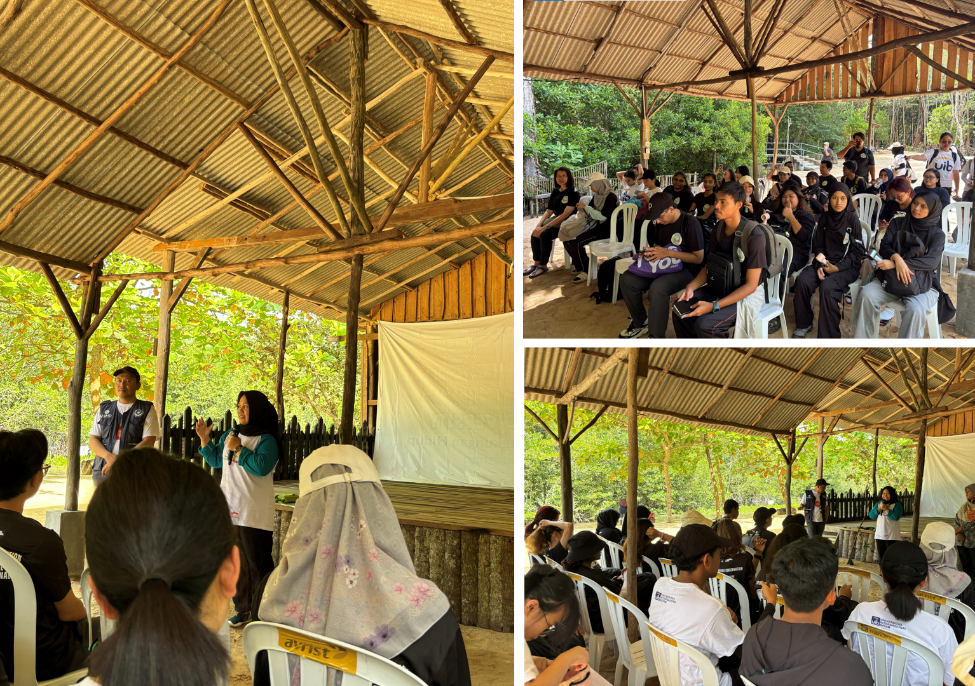
(Explanation about Mangroves by Ms. Intan)
The activity continued with a demonstration on mangrove planting by Mr. Gari. He explained the technical procedures, where each student was provided with a mangrove seedling, a wooden support stick, and raffia rope. The correct planting technique is crucial—including digging the hole to match the depth of the seedling’s soil to ensure stability and prevent displacement by tides. After planting, students secured the seedlings using the wooden stick and raffia rope tied in a simple knot that can be easily removed once the mangrove grows stronger.

(Explanation and Demonstration of Mangrove Planting by Mr. Gari)
Participants then took a guided walk through the mangrove area, where they observed diverse vegetation and wildlife. Many students enthusiastically took photos and noted their findings. Before noon, participants reconvened to receive instructions for the observation activity from Dr. Rohana. She introduced the iNaturalist application as a digital tool to support field documentation. Using this app, students could take photos of plants and animals, which would then be automatically identified. The app connects users with scientific communities and stores valuable environmental data for future analysis. After ensuring all students had installed the application, the session paused for lunch and Friday prayers.
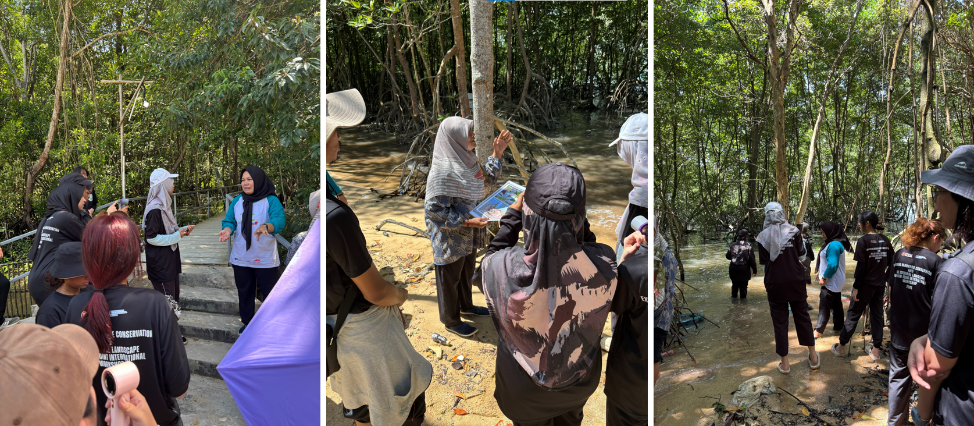
(Mangrove Ecosystem Observation with Ms. Intan and Ms. Yuli)
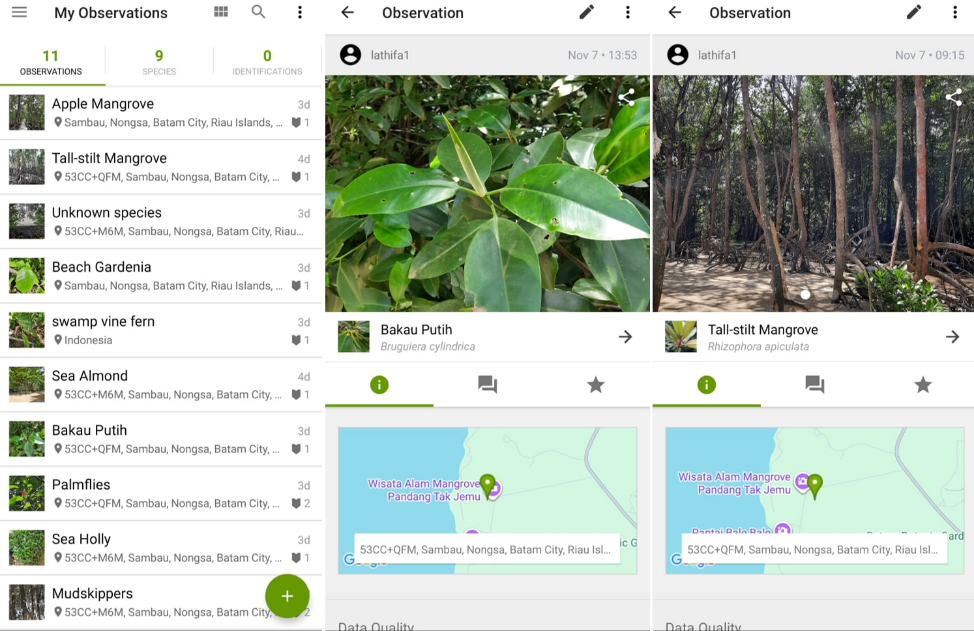
(iNaturalist Apps Appearance)
After the break, students proceeded with observations within their respective groups. Five pre-assigned teams were distributed across five observation zones:
- The entrance zone
- Tourism activity zone (souvenir stalls, huts, stage)
- Mangrove bridge zone
- Western mangrove forest zone
- Eastern mangrove forest zone
Each group was tasked with identifying and documenting at least five plant species using iNaturalist, as well as conducting an inventory of flora, fauna, and existing facilities within their zones. These findings would later serve as the basis for design ideas to be developed on the next day. The observation lasted nearly two hours and showcased strong collaboration between UIB and UTM students. Despite only having known each other for one day, the atmosphere was warm and cohesive.

(Group Observation)
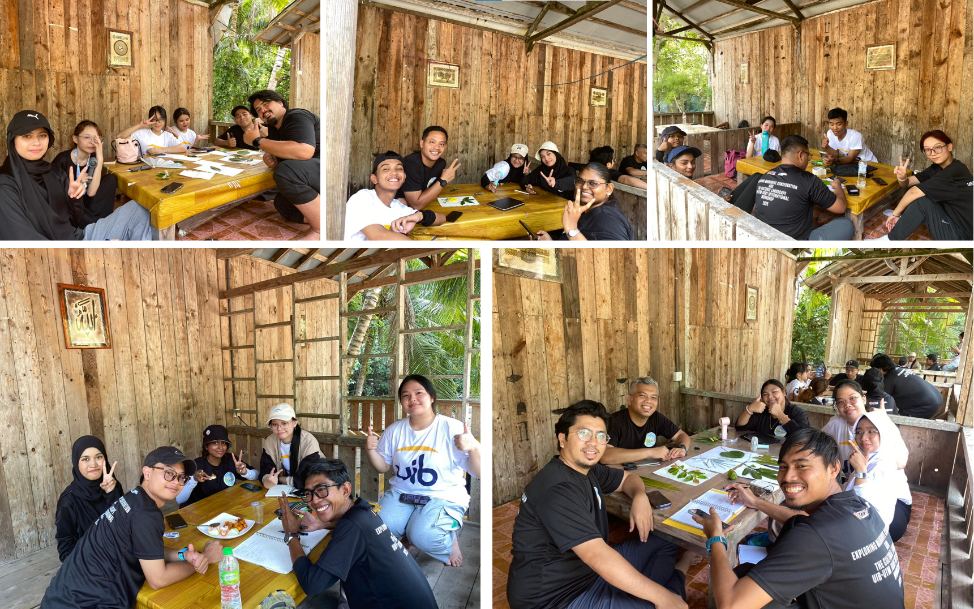
(Group Discussion)
Following the observation, the mangrove planting session commenced as the tide began to recede. Guided by Mr. Gari and Ms. Yuli, students headed to the designated planting area. Due to the muddy terrain, all participants were required to wear rubber boots. The journey was challenging—many students struggled as their boots were stuck in the mud, and some even slipped and got their clothes dirty. Fortunately, no one was injured. Instead, the moment turned into laughter and became a memorable bonding experience. After reaching the planting site, each participant successfully planted their assigned mangrove seedling. The activity became a meaningful first-hand conservation experience for everyone involved.

(Mangrove Planting)
The mangrove planting session marked the conclusion of Day 2 activities. In the closing moment, Mr. Gari expressed his gratitude for the participants’ enthusiasm and commitment to mangrove conservation. He shared his hope that such activities will continue in the future. Representatives from UTM and UIB also delivered their impressions, expressing joy at experiencing their first mangrove planting and gaining valuable new knowledge. Each representative ended their remarks with a cheerful pantun, adding a light and cultural touch to the session.
Before leaving the site, participants were reminded of the agenda for Day 3, which includes group discussions, development of ideas and design concepts, and group presentations. By 16.00 WIB, the UIB team returned to the UIB campus, and the UTM team headed back to the hotel to rest and prepare for the next day’s activities.

(Photo Session Before Starting the Activity at Ekowisata Mangrove Pandang Tak Jemu)
Undergraduate Program in Architecture
Universitas Internasional Batam

